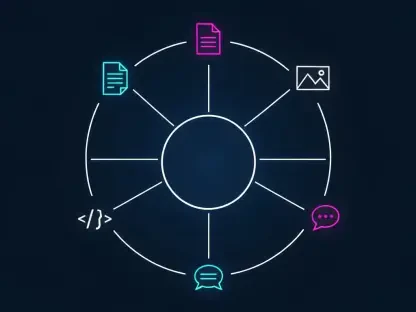Oscar Vail is at the cutting edge of technology, exploring innovations in quantum computing, robotics, and open-source projects. His insights into healthcare data analytics provide a crucial perspective on how technology can bridge communication gaps and drive equity in healthcare.
What are some common issues patients face when it comes to communication in healthcare settings?
Patients often encounter difficulties in comprehending medical jargon and treatment plans. Time constraints mean that physicians may not have the opportunity to thoroughly explain diagnoses or procedures, leaving patients with partial understanding and anxiety about their care.
How does data help identify gaps in patient communication?
Data analytics enables us to track patterns in patient feedback and survey responses, highlighting areas where communication consistently falls short. By analyzing this data, healthcare facilities can pinpoint departments or situations with recurring communication issues, guiding targeted improvements.
Can you explain how sentiment analysis tools work in the context of healthcare complaints?
Sentiment analysis tools process vast amounts of patient feedback by detecting and categorizing emotions expressed in written comments. By identifying common themes of dissatisfaction or confusion, these tools help healthcare providers understand patient sentiments and prioritize areas needing attention.
What are some patterns healthcare data analysts look for when examining patient feedback?
Analysts search for recurring themes in patient complaints, such as common dissatisfaction points like long wait times or misunderstandings about treatment plans. They also look for demographic patterns to identify if certain groups are more affected by communication issues.
How do dashboards in modern healthcare systems aid in visualizing complaint patterns?
Dashboards offer dynamic visual representations of data, enabling healthcare leaders to view complaint trends over time and across departments. This visualization helps quickly identify problem areas and track the effects of implemented changes in a comprehensible format.
In what ways can communication gaps impact patient experiences and outcomes?
Communication gaps can lead to misunderstandings about treatments, resulting in reduced patient satisfaction, adherence to medical advice, and potentially adverse health outcomes. Poor communication can also erode trust in healthcare providers, affecting the overall care experience.
What role does natural language processing play in analyzing patient comments and identifying communication breakdowns?
Natural language processing (NLP) analyzes textual data from patient comments to detect communication breakdowns. By interpreting language patterns and sentiment scores, NLP helps identify specific issues patients are facing, whether it’s confusion over medical terms or dissatisfaction with doctor interactions.
How can healthcare systems utilize patient portal usage metrics to improve communication?
By examining metrics such as login frequency and content engagement, healthcare systems can identify which resources are underused or misunderstood, allowing them to refine portal content to better meet patient needs and improve information accessibility.
What are some resources hospitals might need to effectively address communication gaps?
Hospitals may require additional training for staff in effective communication strategies and cultural competency. They might also need advanced technology, like patient-friendly apps or translation services, to enhance understanding and engagement across diverse patient populations.
Why might patient conversations with physicians often be shorter than ideal?
Time constraints are a significant factor. Physicians are often pressured to see many patients in a short period, which limits the time available for in-depth discussions and explanations, sometimes resulting in a lack of clarity for patients.
What are some actionable steps hospitals can take to improve patient communication?
Hospitals can introduce standardized communication protocols, invest in training programs for staff on effective communication skills, and utilize technology like appointment follow-up calls to ensure patients understand their care plans and have their questions answered.
How does data reveal disparities in healthcare equity?
Data analysis can uncover trends showing discrepancies in how different demographic groups receive care or have access to resources. By evaluating outcomes and experiences, health systems can identify where inequities exist and devise strategies to address them.
What are some challenges minorities face in accessing preventative care?
Minorities often encounter barriers such as financial constraints, transportation issues, and less access to primary care services. Additionally, cultural misunderstandings and reluctance to engage with healthcare systems due to historical mistrust can further impede access to care.
How does unconscious bias manifest in healthcare settings?
Unconscious bias in healthcare can result in uneven treatment recommendations and a lack of rapport with patients from diverse backgrounds. Providers might inadvertently prioritize certain concerns over others, influenced by stereotypes or insufficient cultural understanding.
What role can structured communication protocols and bias awareness training play in reducing disparities?
By standardizing how providers communicate with patients and raising awareness of implicit biases, healthcare organizations can minimize discrepancies in treatment and improve the quality of interactions across diverse patient groups, leading to more equitable care.
How does ageism impact patient care and communication within healthcare settings?
Ageism can lead to assumptions that older patients are less capable of understanding or managing their own health, potentially downplaying their input and preferences. This can cause older patients to feel undervalued and hinder their active participation in healthcare decisions.
Can data specifically help in identifying and combating implicit bias in healthcare?
Data analysis can track and highlight trends of differential treatment outcomes among varying patient demographics, serving as an objective tool to identify potential areas where implicit bias may influence care delivery, and allowing institutions to target corrective measures.
What infrastructure is necessary within hospitals to effectively support patient communication?
Robust communication infrastructure includes patient-friendly technologies, comprehensive staff training programs focused on empathetic communication, and systems to ensure consistent follow-up and feedback loops to address and rectify patient concerns effectively.
How can the services of healthcare social workers benefit certain patients?
Social workers can aid patients in navigating complex healthcare systems, advocate for their needs, and connect them with supportive services, thereby improving their overall healthcare experience and optimizing care outcomes.
What roles do speech-language pathologists, counselors, and ministers play in improving healthcare communication?
These professionals support patient communication by addressing specific language or emotional needs. Pathologists improve patient understanding, counselors provide emotional support, and ministers offer spiritual guidance, all contributing to a more holistic healthcare experience.
Why is it important for patients to have influence over their own healthcare?
Empowering patients to have input in their care builds trust and confidence, encourages adherence to treatment plans, and can lead to improved health outcomes by making them active participants in their health journey.









